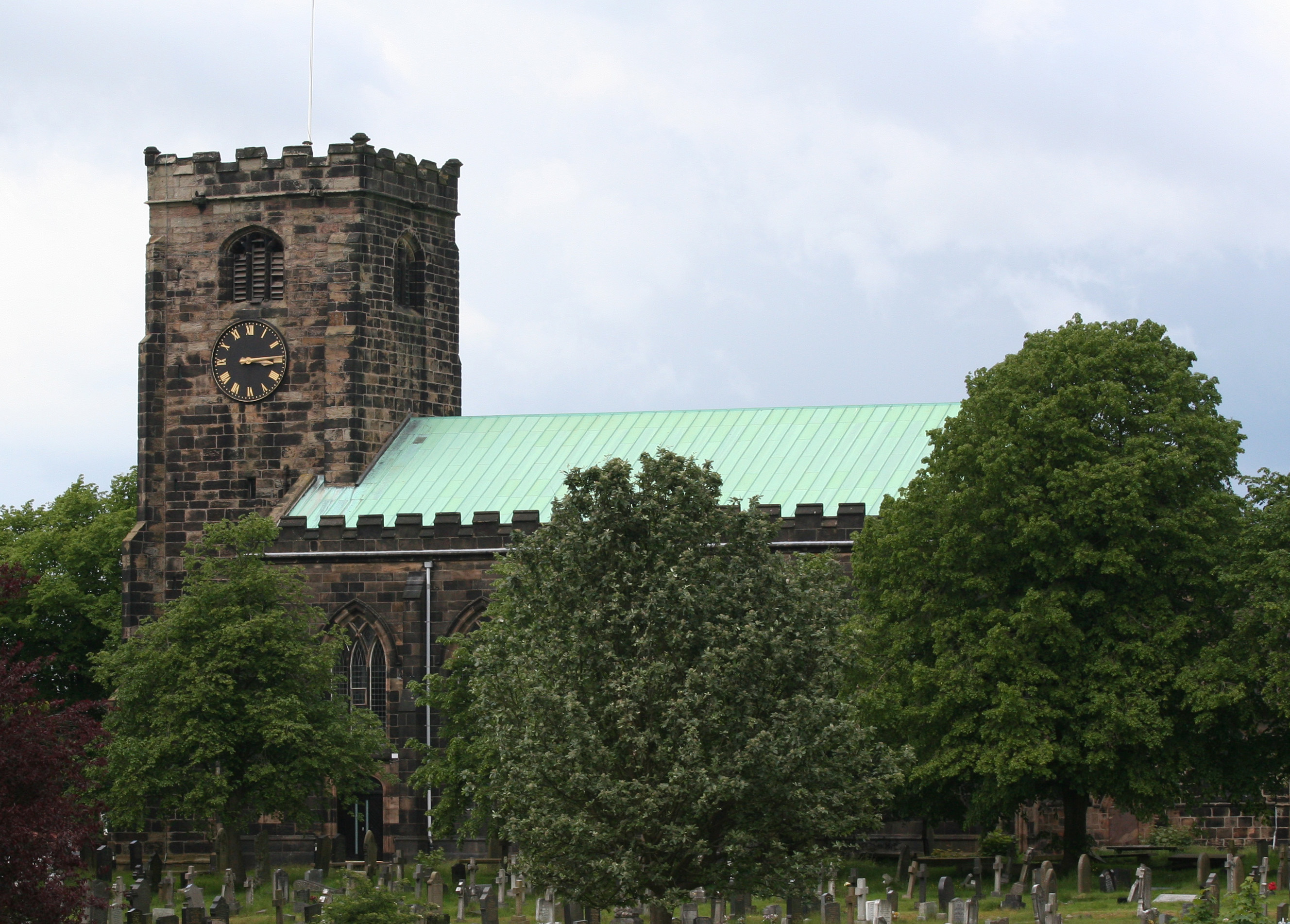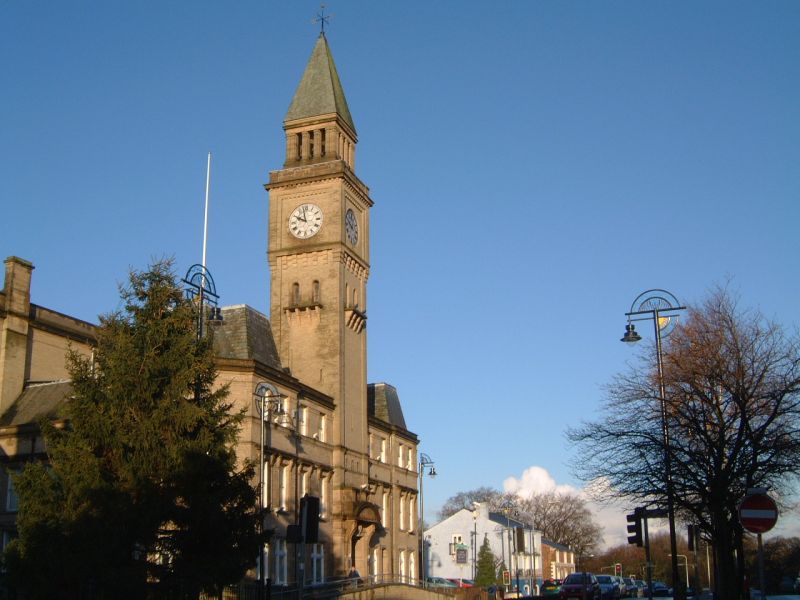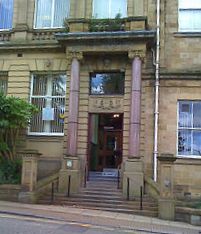|
The Bee (radio Station)
The Bee was a local radio station serving southern and eastern parts of Lancashire, England. On Friday 27 May 2016, The Bee merged with its sister Lancashire station 2BR. The station was owned and operated by UKRD and broadcast from studios at Clayton-le-Moors in Accrington. History ''The Bee'' initially broadcast to the Blackburn, Darwen and Accrington areas under RSL licences in 2001 and 2002, before winning a permanent licence in December 2004. The station, founded by Roy Martin, launched full-time on 1 October 2005. Its investors included neighbouring station 2BR, The Radio Business and local shareholders. Initially based at Dalton Court in Darwen, the station moved to Petre Court in Clayton-le-Moors in August 2010, co-locating with 2BR. At 7pm on 17 June 2011, the station began broadcasting to the Preston, Leyland and Chorley areas on 106.5 FM, following the sale and subsequent closure of 106.5 Central Radio. A further relay (96.3FM) for the Chorley area went on air ... [...More Info...] [...Related Items...] OR: [Wikipedia] [Google] [Baidu] |
FM Broadcasting
FM broadcasting is a method of radio broadcasting using frequency modulation (FM). Invented in 1933 by American engineer Edwin Armstrong, wide-band FM is used worldwide to provide high fidelity sound over broadcast radio. FM broadcasting is capable of higher fidelity—that is, more accurate reproduction of the original program sound—than other broadcasting technologies, such as AM broadcasting. It is also less susceptible to common forms of interference, reducing static and popping sounds often heard on AM. Therefore, FM is used for most broadcasts of music or general audio (in the audio spectrum). FM radio stations use the very high frequency range of radio frequencies. Broadcast bands Throughout the world, the FM broadcast band falls within the VHF part of the radio spectrum. Usually 87.5 to 108.0 MHz is used, or some portion thereof, with few exceptions: * In the former Soviet republics, and some former Eastern Bloc countries, the older 65.8–74 MHz band ... [...More Info...] [...Related Items...] OR: [Wikipedia] [Google] [Baidu] |
Blackburn
Blackburn () is an industrial town and the administrative centre of the Blackburn with Darwen borough in Lancashire, England. The town is north of the West Pennine Moors on the southern edge of the Ribble Valley, east of Preston and north-northwest of Manchester. Blackburn is the core centre of the wider unitary authority area along with the town of Darwen. It is one of the largest districts in Lancashire, with commuter links to neighbouring cities of Manchester, Salford, Preston, Lancaster, Liverpool, Bradford and Leeds. At the 2011 census, Blackburn had a population of 117,963, whilst the wider borough of Blackburn with Darwen had a population of 150,030. Blackburn had a population of 117,963 in 2011, with 30.8% being people of ethnic backgrounds other than white British. A former mill town, textiles have been produced in Blackburn since the middle of the 13th century, when wool was woven in people's houses in the domestic system. Flemish weavers who settled in t ... [...More Info...] [...Related Items...] OR: [Wikipedia] [Google] [Baidu] |
Lancashire
Lancashire ( , ; abbreviated Lancs) is the name of a historic county, ceremonial county, and non-metropolitan county in North West England. The boundaries of these three areas differ significantly. The non-metropolitan county of Lancashire was created by the Local Government Act 1972. It is administered by Lancashire County Council, based in Preston, and twelve district councils. Although Lancaster is still considered the county town, Preston is the administrative centre of the non-metropolitan county. The ceremonial county has the same boundaries except that it also includes Blackpool and Blackburn with Darwen, which are unitary authorities. The historic county of Lancashire is larger and includes the cities of Manchester and Liverpool as well as the Furness and Cartmel peninsulas, but excludes Bowland area of the West Riding of Yorkshire transferred to the non-metropolitan county in 1974 History Before the county During Roman times the area was part of the Bri ... [...More Info...] [...Related Items...] OR: [Wikipedia] [Google] [Baidu] |
Preston, Lancashire
Preston () is a city on the north bank of the River Ribble in Lancashire, England. The city is the administrative centre of the county of Lancashire and the wider City of Preston local government district. Preston and its surrounding district obtained city status in 2002, becoming England's 50th city in the 50th year of Queen Elizabeth II's reign. Preston has a population of 114,300, the City of Preston district 132,000 and the Preston Built-up Area 313,322. The Preston Travel To Work Area, in 2011, had a population of 420,661, compared with 354,000 in the previous census. Preston and its surrounding area have provided evidence of ancient Roman activity, largely in the form of a Roman road that led to a camp at Walton-le-Dale. The Angles established Preston; its name is derived from the Old English meaning "priest's settlement" and in the ''Domesday Book'' is recorded as "Prestune". In the Middle Ages, Preston was a parish and township in the hundred of Amounderness an ... [...More Info...] [...Related Items...] OR: [Wikipedia] [Google] [Baidu] |
Leyland, Lancashire
Leyland () is a town in South Ribble, Lancashire, England, six miles (10 km) south of Preston. The population was 35,578 at the 2011 Census. The name of the town is Anglo-Saxon, meaning "untilled land". History English Leyland was an area of fields, with Roman roads passing through, from ancient Wigan to Walton-le-Dale. It was left undisturbed for many centuries until rediscovered shortly after the Battle of Hastings (1066). Leyland is mentioned in the Domesday Book (1085). In 1066, King Edward the Confessor presided over the whole of Leyland. The manor was divided into three large ploughlands, which were controlled by local noblemen. In the 12th century, it came under the barony of Penwortham. The area of Worden, which is now Worden Park, was one of nine oxgangs of land granted to the Knights Hospitaller, by Roger de Lacy, in Lancashire, but the land was not assigned to any individual and a local man, who was a very close friend of de Lacy, Hugh Bussel, was assigned ... [...More Info...] [...Related Items...] OR: [Wikipedia] [Google] [Baidu] |
Chorley
Chorley is a town and the administrative centre of the wider Borough of Chorley in Lancashire, England, north of Wigan, south west of Blackburn, north west of Bolton, south of Preston and north west of Manchester. The town's wealth came principally from the cotton industry. In the 1970s, the skyline was dominated by factory chimneys, but most have now been demolished: remnants of the industrial past include Morrisons chimney and other mill buildings, and the streets of terraced houses for mill workers. Chorley is the home of the Chorley cake. History Toponymy The name ''Chorley'' comes from two Anglo-Saxon words, and , probably meaning "the peasants' clearing". (also or ) is a common element of place-name, meaning a clearing in a woodland; refers to a person of status similar to a freeman or a yeoman. Prehistory There was no known occupation in Chorley until the Middle Ages, though archaeological evidence has shown that the area around the town has been inhabited ... [...More Info...] [...Related Items...] OR: [Wikipedia] [Google] [Baidu] |
Hot AC
Adult contemporary music (AC) is a form of radio-played popular music, ranging from 1960s vocal and 1970s soft rock music to predominantly ballad-heavy music of the present day, with varying degrees of easy listening, pop, soul, R&B, quiet storm and rock influence. Adult contemporary is generally a continuation of the easy listening and soft rock style that became popular in the 1960s and 1970s with some adjustments that reflect the evolution of pop/rock music. Adult contemporary tends to have lush, soothing and highly polished qualities where emphasis on melody and harmonies is accentuated. It is usually melodic enough to get a listener's attention, and is inoffensive and pleasurable enough to work well as background music. Like most of pop music, its songs tend to be written in a basic format employing a verse–chorus structure. The format is heavy on romantic sentimental ballads which mostly use acoustic instruments (though bass guitar is usually used) such as acousti ... [...More Info...] [...Related Items...] OR: [Wikipedia] [Google] [Baidu] |
UKRD
The UKRD Group Ltd was a British media company that owned 15 commercial radio stations in the United Kingdom. The name originates from UK Radio Developments. Since its acquisition in March 2019, it has been run as a subsidiary of Bauer Radio. History Formed on 22 August 1990 as a company to invest in commercial stations following the relaxation of station ownership laws, its first investment was a stake in Cornwall's Pirate FM 102, which was designed and launched by former County Sound boss Mike Powell who, after leaving County Sound, had formed Infinity Radio. Shortly after the launch, Infinity Radio merged with UK Radio Developments and Powell became CEO of the embryonic UKRD Group. Under Powell's leadership, UKRD became one of the fastest growing private radio groups in the UK, rapidly adding Star FM in Slough and winning the Guildford radio franchise which gave birth to 96.4 The Eagle, the new County Sound (a recreation of the original Guildford commercial station of the s ... [...More Info...] [...Related Items...] OR: [Wikipedia] [Google] [Baidu] |
Clayton-le-Moors
Clayton-le-Moors is an industrial town in the borough of Hyndburn in the county of Lancashire, England. located two miles north of Accrington. The town has a population of 8,522 according to the 2011 census. To the west lies Rishton, to the north Great Harwood, and two miles to the south, Accrington. Clayton-le-Moors is situated on the A680 road alongside the M65 motorway. History It is thought that the town developed with the fusion of the two hamlets of Oakenshaw (bottom end) and Enfield (top end) which began during the construction of the Leeds Liverpool Canal, which pre-dated the railways. The merger continued with the development of the cotton textile industry, particularly that of weaving and cloth finishing. The stretch of canal between Burnley and Enfield Wharf (now alongside the Enfield Bridge on Blackburn Road) was opened in 1801. By 1808 it had been extended to Church. The final link up between Leeds and Liverpool was completed 1816. Clayton-le-Moors now lies at t ... [...More Info...] [...Related Items...] OR: [Wikipedia] [Google] [Baidu] |
Accrington
Accrington is a town in the Hyndburn borough of Lancashire, England. It lies about east of Blackburn, west of Burnley, east of Preston, north of Manchester and is situated on the culverted River Hyndburn. Commonly abbreviated by locals to "Accy", the town has a population of 35,456 according to the 2011 census. Accrington is a former centre of the cotton and textile machinery industries. The town is famed for manufacturing the hardest and densest building bricks in the world, "The Accrington NORI" (iron), which were used in the construction of the Empire State Building and for the foundations of Blackpool Tower; famous for Accrington Stanley F.C. and the Haworth Art Gallery which holds Europe's largest collection of Tiffany glass. History Origin of the name The name Accrington appears to be Anglo-Saxon in origin. The earliest citing appears in the Parish of Whalley records of 850; where it is written ''Akeringastun''. In later records, the name variously appears as ''Ak ... [...More Info...] [...Related Items...] OR: [Wikipedia] [Google] [Baidu] |
Darwen
Darwen is a market town and civil parish in the Blackburn with Darwen borough in Lancashire, England. The residents of the town are known as "Darreners". The A666 road passes through Darwen towards Blackburn to the north, Bolton to the south and Pendlebury where it joins the A6, about north-west of Manchester. The population of Darwen stood at 28,046 in the 2011 census. The town comprises five wards and has its own town council. The town stands on the River Darwen, which flows from south to north and is visible only in the outskirts of the town, as within the town centre it runs underground. Toponym Darwen's name is Celtic in origin. In Sub Roman Britain it was within the Brythonic kingdom of Rheged, a successor to the Brigantes tribal territory. The Brythonic language name for oak is ''derw'' and this is etymologically linked to ''Derewent'' (1208), an ancient spelling for the River Darwen. Despite the area becoming part of the Anglo-Saxon Kingdom of Northumbria ... [...More Info...] [...Related Items...] OR: [Wikipedia] [Google] [Baidu] |
Restricted Service Licence
A UK Restricted Service Licence (often called an RSL), is typically granted to radio stations and television stations broadcasting within the UK to serve a local community or a special event. Licences are granted by the broadcasting authority Ofcom (formerly the Radio Authority and the Independent Television Commission, respectively). History In 1972, the Independent Broadcasting Authority was created and given responsibility for regulating independent television and radio services in the UK. Over time, the demand for local services increased, and finally prompted an Act of Parliament to deregulate the respective industries and facilitate new long-term and short-term broadcast licences. In 1990, the Broadcasting Act 1990 became law, and led to the establishment of two licensing authorities: the Radio Authority to license new radio services and monitor existing licences, and the Independent Television Commission, to license new short-term television services. While the 1990 ... [...More Info...] [...Related Items...] OR: [Wikipedia] [Google] [Baidu] |






